Address
430 E 29th St, New York, NY 10016, United States
Need help or have a question?
Contact us at: hello@doctormier.com
Address
430 E 29th St, New York, NY 10016, United States
Need help or have a question?
Contact us at: hello@doctormier.com
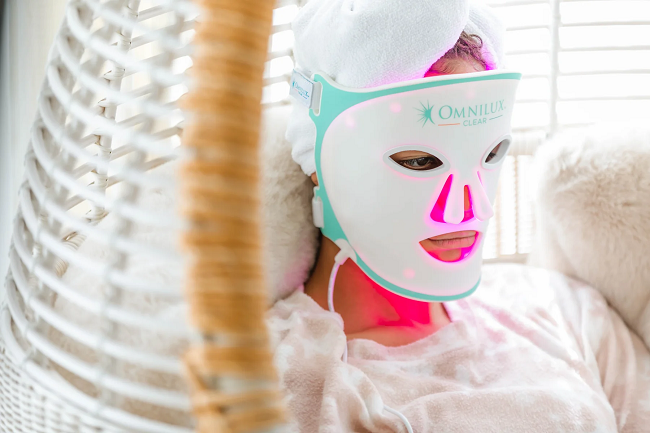
Acne can be a frustrating and sometimes debilitating condition, affecting people of all ages and skin types. While traditional treatments such as topical creams and oral medications can be effective, they often come with unpleasant side effects. Therefore, more and more people are interested in non-invasive treatments, and Omnilux is one of them. This treatment is gaining popularity for its safe and effective approach to clearing up acne without harsh chemicals or medications.
But how does it work, and is it recommended by dermatologists? What are the potential side effects, and what kind of results can you expect to see? In this article, we'll answer all of your questions about Omnilux for acne, from the science behind the treatment to real results.
Acne is a prevalent skin condition, which happens due to the blockage of hair follicles with dead skin cells and sebum. Although the precise reasons for acne remain unclear, numerous factors are known to contribute to its onset:
Sebum is an oily substance produced by the glands to maintain skin moisture and protection. However, an overproduction can mix with dead skin cells and obstruct the pores, causing the development of acne.
P. acnes is a type of bacteria that lives on the skin and is normally harmless. However, when pores become clogged, P. acnes can multiply rapidly and trigger an inflammatory response, leading to the formation of painful, red bumps on the skin. Poor hygiene, excessive sweating, and a weakened immune system can increase the risk of bacterial infections and worsen acne symptoms.
Acne development is heavily influenced by hormones.
Androgens are produced at higher levels during puberty, resulting in an upsurge in acne breakouts, notably in the face, chest, and back. Furthermore, hormonal imbalances during menstrual cycles, pregnancy, and menopause can also contribute to the occurrence of acne.

In addition to genetics and hormones, various lifestyle factors can also play a role in the development of acne.
Overall, the causes of acne are complex and can vary from person to person. Treatment options will depend on the severity of the condition, underlying causes, the person's medical history, and lifestyle factors.
Light therapy, in particular Omnilux, has proven to be a promising treatment option for some types of acne. That's why we will provide you with more information about this.
Omnilux is one of the first companies to introduce treatments that combine the power of 415 nm (Omnilux blue) and 633 nm (Omnilux Revive) light waves to effectively treat mild to moderate acne and cystic acne.
In the Omnilux treatment, blue light targets the photosensitive substances produced by the P. acnes bacteria and effectively induces the death of the bacteria, thereby eliminating the inflammatory impacts. And the red light not only minimizes the redness associated with acne lesions, but also stimulates collagen production for healthier, rejuvenated skin.
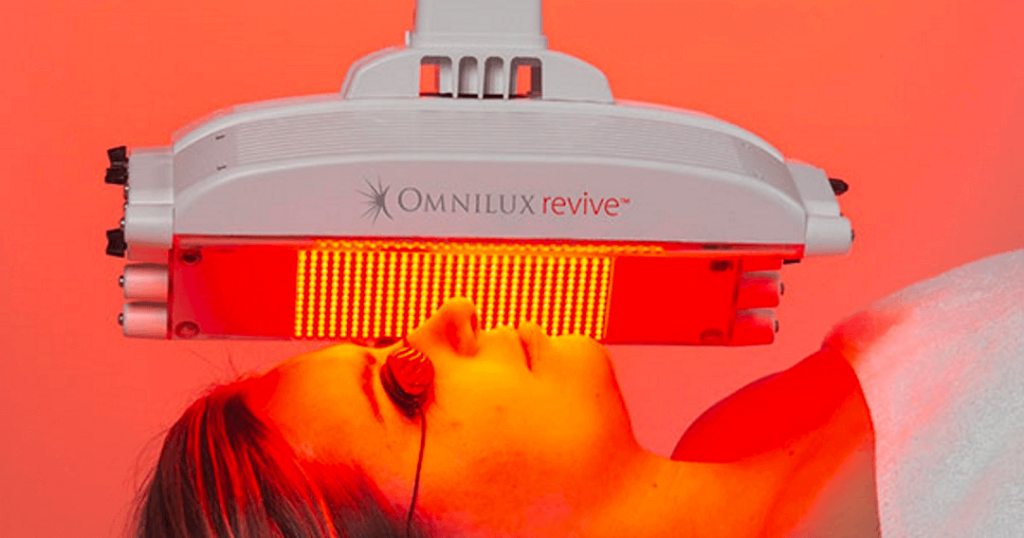
Since the mentioned devices are professional panels that can only be used in the clinic, the manufacturers began to think about a more compact device.
So, the latest addition is Omnilux CLEAR, a medical-grade LED mask for home use that offers both red and blue wavelengths of light optimized for maximum efficiency. Now you don't have to leave your own home to enjoy the benefits of Omnilux's treatment technology.
Omnilux's clinical approach has been shown to effectively reduce inflammatory lesions by 81% after a 12-week therapy period. Also, positive improvements have been observed as early as two weeks into the regimen, indicating the treatment's early efficacy [2].
To ensure the effectiveness of this treatment method, we reviewed the results of real users and are ready to share them with you.

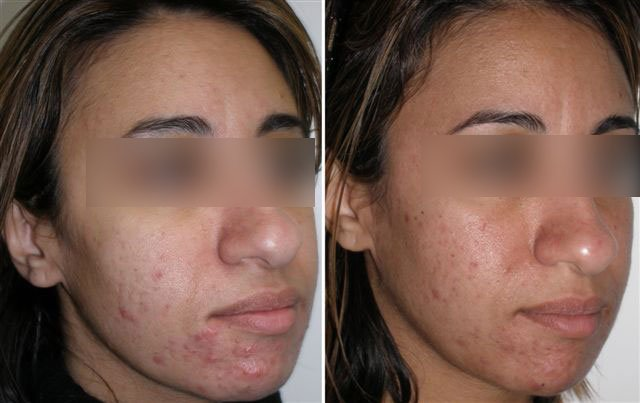
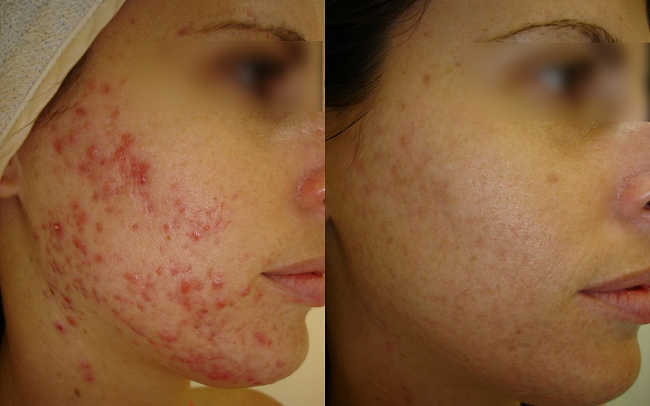
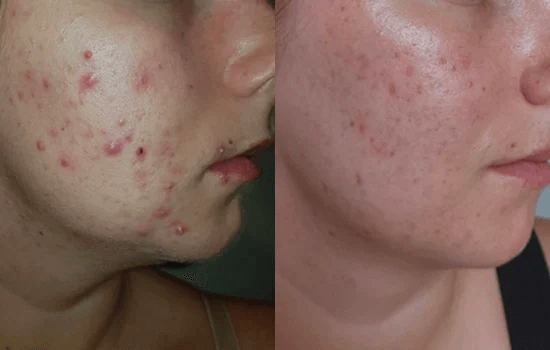
Millions of people worldwide experience acne, a prevalent skin condition. While there are many treatment options available, more and more prefer non-invasive or drug-free solutions. In recent years, red light therapy has gained attention as a potential acne cure. Here are some studies that have explored the efficacy of this method.
In the study [3], 28 patients with mild to moderate acne were treated with portable red light-emitting devices. The right or left side of the face was chosen for treatment, and sessions were performed for 15 minutes twice a day for 8 weeks. As a result, an average reduction in inflammatory lesions of 59% by the end of the study was recorded. There were no significant side effects (one patient mentioned a burning sensation that disappeared within an hour of treatment).

In the following study [4], 24 patients who had mild to moderate facial acne were treated with LED therapy utilizing blue (415 nm) and red (633 nm) light. The treatment was administered twice weekly for a duration of four weeks. The results showed a substantial improvement in both non-inflammatory and inflammatory lesions, with a reduction of 34.28% and 77.93%, accordingly. Moreover, measurements indicated that melanin levels were significantly reduced following the treatment, which resulted in an improvement in skin tone and texture for some patients.
As part of a study [5], 28 patients with mild to moderate acne vulgaris received treatment with red light therapy (630 nm) and infrared laser (890 nm) on opposite sides of their faces twice a week for 12 sessions. After ten weeks, a significant reduction in acne was observed on the side treated with 630 nm red therapy, while there was no visible effect with the infrared laser sessions.
Omnilux light therapy is a popular treatment option for individuals struggling with acne.
One of the reasons why dermatologists recommend Omnilux light therapy is its safety profile. The devices used in this therapy have undergone testing and meet medical device standards, including eye safety. Another reason is its non-invasive nature — it does not require any needles, incisions, or other aggressive procedures.
In addition, Omnilux light therapy has also been shown to be an effective treatment for acne, and it has received for this specific purpose.
However, before starting any new treatment, it is always important to consult with a qualified healthcare professional. They can help determine if Omnilux light therapy is a suitable option for your specific condition and medical history.
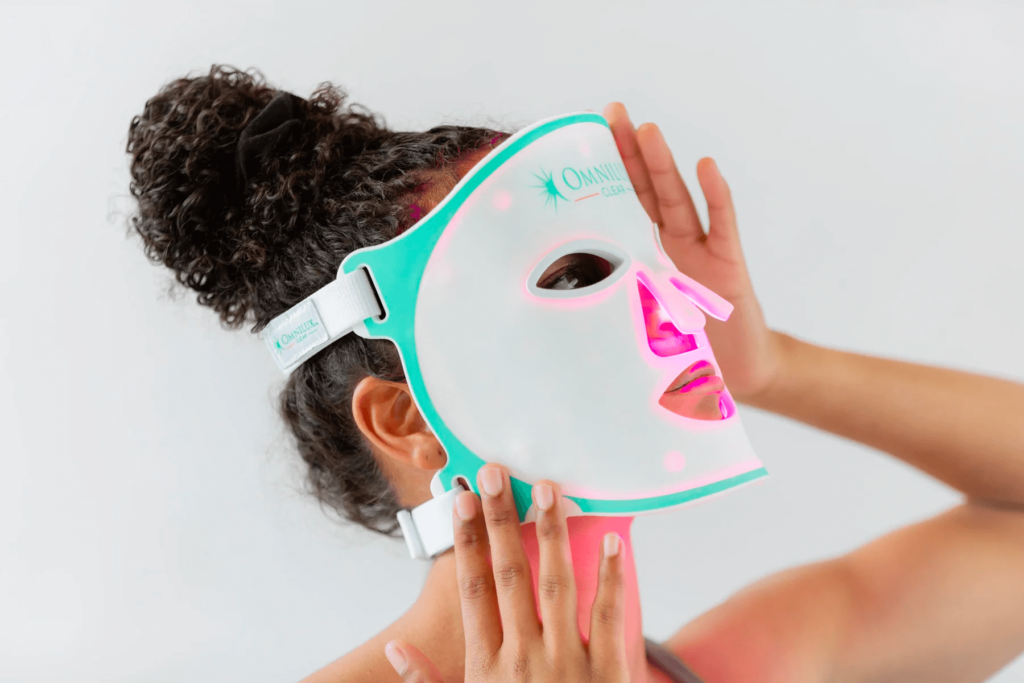
Omnilux light therapy is a non-invasive cosmetic treatment and while it is generally considered safe, there are some potential side effects to be aware of.
One possible side effect of Omnilux is temporary redness or swelling of the treated area. This is a normal reaction and usually resolves within a few hours to a few days. Some individuals may also experience mild itching, tingling, or warmth during the treatment, but these sensations are typically well-tolerated.
In rare cases, Omnilux light therapy may cause more severe side effects such as burns or blisters. This can occur if the skin is exposed to too much light or if the treatment is not administered properly. To minimize the risk of burns or blisters, it is important to follow the treatment guidelines.
Also, Omnilux may not be suitable for everyone.
Individuals with a history of skin cancer or who are taking photosensitizing medications should avoid this cure method. In addition, before starting any treatment, it is worth consulting with a dermatologist or your doctor so that they can determine if the therapy is right for you.
The treatment is actually known for its acne-fighting benefits, rather than causing pimples.
By targeting the root causes of acne, such as bacteria, inflammation, and clogged pores, Omnilux therapy can effectively reduce acne and improve the overall health of your skin.
Omnilux is a promising treatment option for those struggling with acne. Unlike traditional treatments, this light therapy approach has minimal side effects and offers impressive results. While it may not be suitable for everyone, it's certainly worth considering as an alternative or supplement to other treatments.
Before starting Omnilux for acne, it's important to speak with a dermatologist to determine if it's right for you and to understand any potential risks or side effects. With proper guidance and a commitment to treatment, you will see dramatic improvements in your skin.
Yes, Omnilux light therapy is generally considered safe for most people. However, it is important to consult with a doctor before starting any new skincare treatment to ensure it is safe for your skin type and condition.
No, although some patients may experience a slight warming sensation on the skin during treatment, but this is not uncomfortable.
There are typically no side effects, although some patients may experience mild redness or dryness in the treated area.
Yes, dermatologists recommend Omnilux light therapy as a safe and effective treatment option, especially for those who have not responded well to other acne treatments. However, as with any treatment, individual results may vary, and it is essential to consult with a doctor before any treatment.